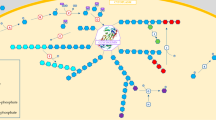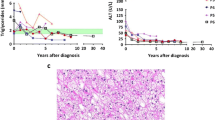Abstract.
Of the many complications associated with glycogen storage disease type I, hepatic tumours cause great concern because of their malignant potential and the current difficulties in monitoring them. Hepatic adenomas occur in 22%–75% of affected adults, according to the population studied, and from those reported in the literature are thought to have an approximately 10% risk of undergoing malignant transformation. Their aetiology is unclear, but they occur generally in post-pubertal patients, and can be either single or multiple. This article discusses theories of their aetiology, methods of detection and monitoring, and treatment options. Conclusion: the incidence of liver tumours in younger adults seems less than in older ones, suggesting that better dietary treatment, and thus improved metabolic control, may be protective. Surgery (partial hepatectomy or orthotopic liver transplantation) is the definitive therapy for these tumours, but the timing of this intervention is difficult to determine and it is not without its own hazards.
Similar content being viewed by others
Author information
Authors and Affiliations
Additional information
Electronic Publication
Rights and permissions
About this article
Cite this article
Lee, P. Glycogen storage disease type I: pathophysiology of liver adenomas. Eur J Pediatr 161 (Suppl 1), S46–S49 (2002). https://doi.org/10.1007/s00431-002-1002-0
Issue Date:
DOI: https://doi.org/10.1007/s00431-002-1002-0




